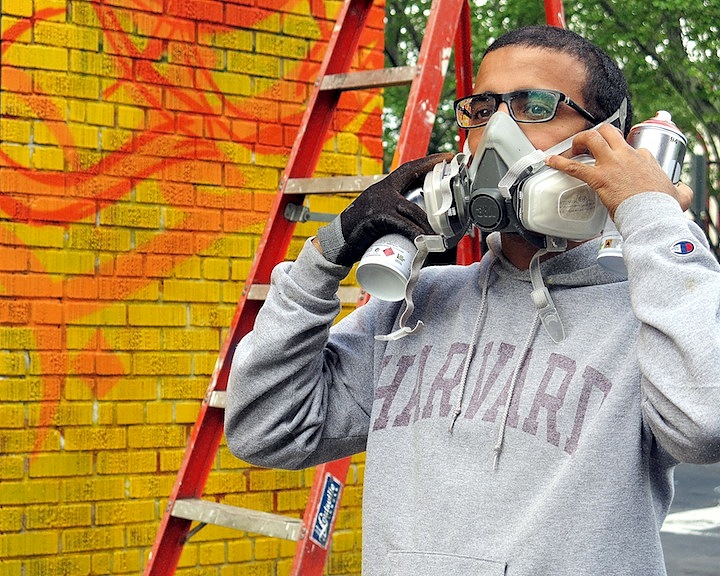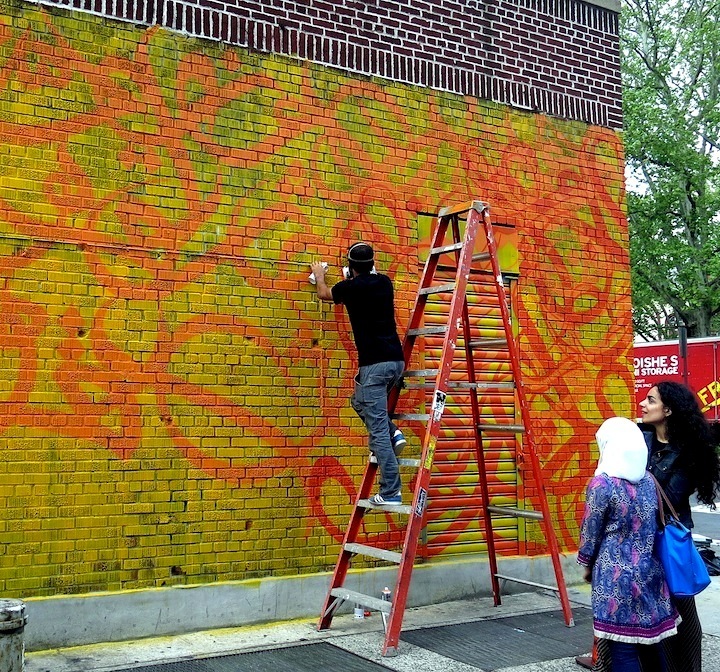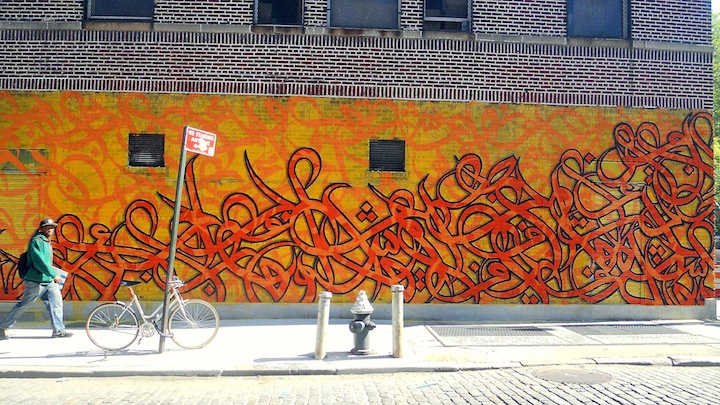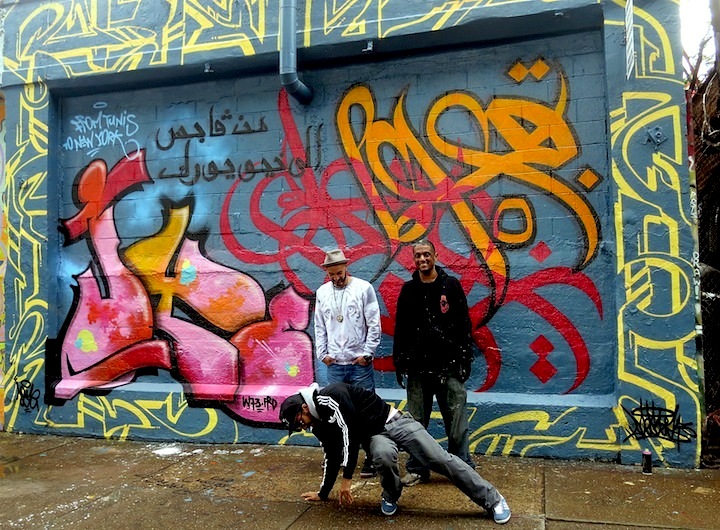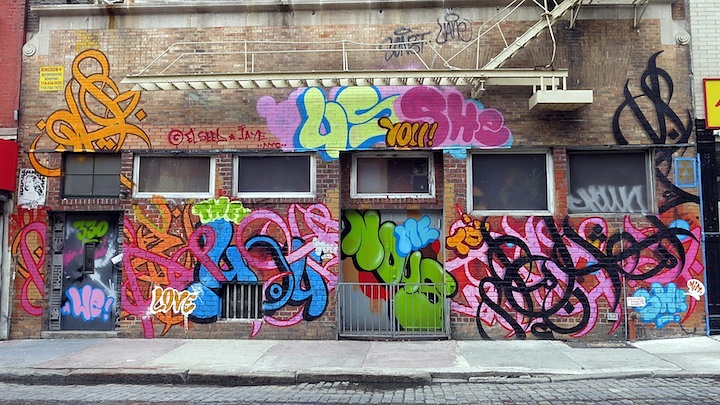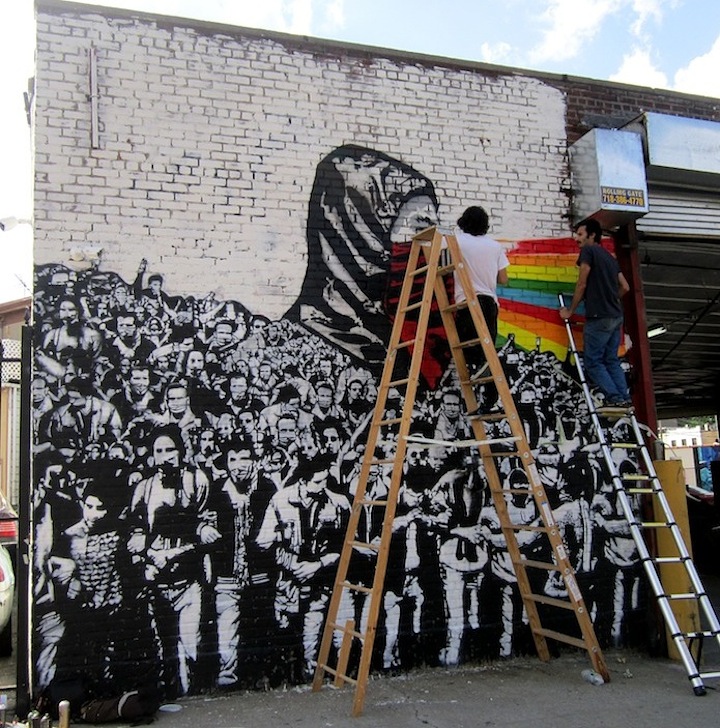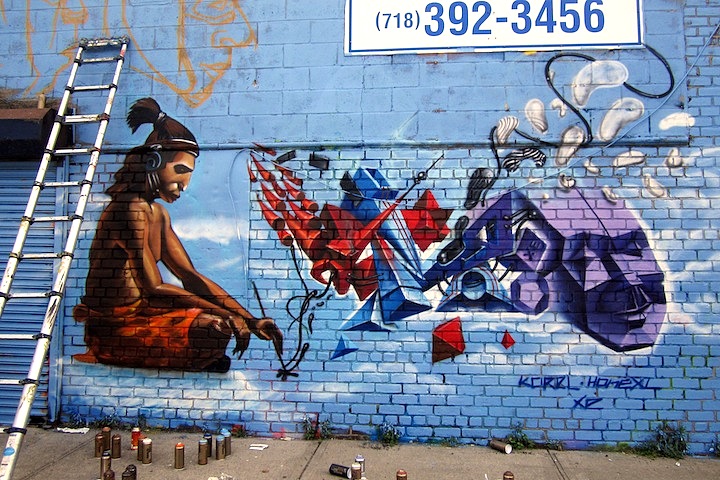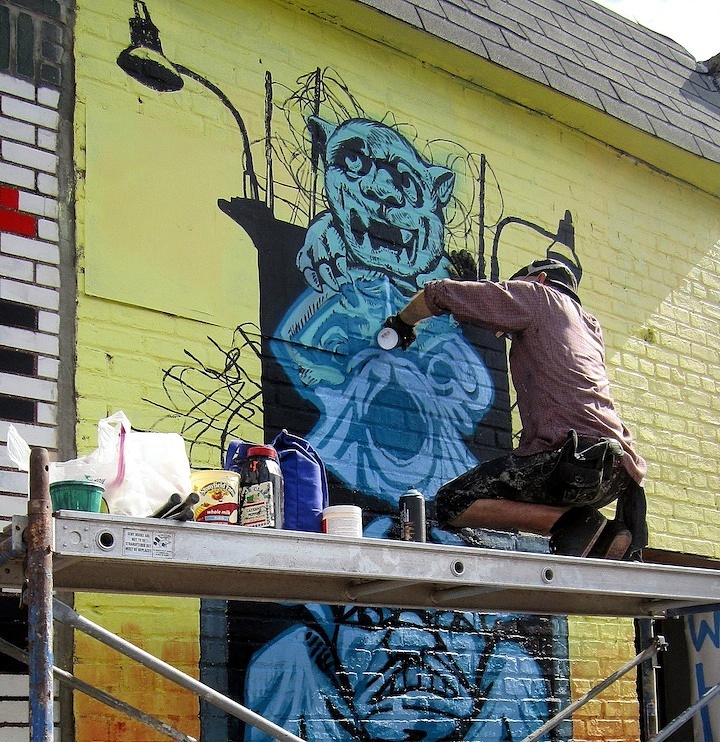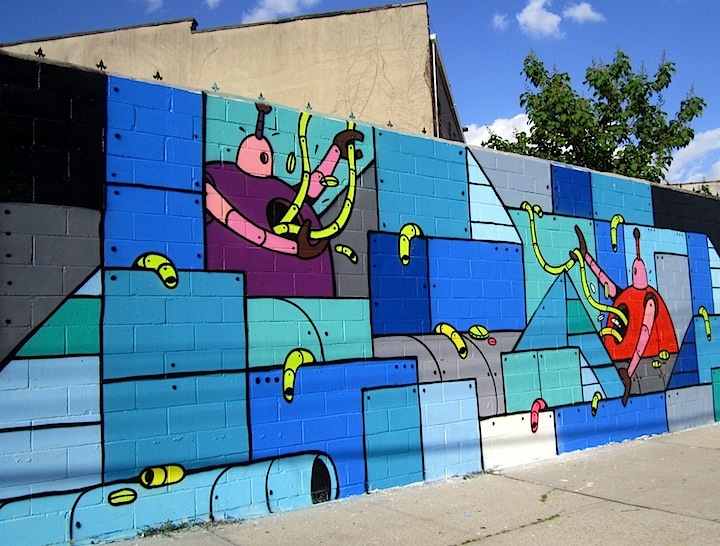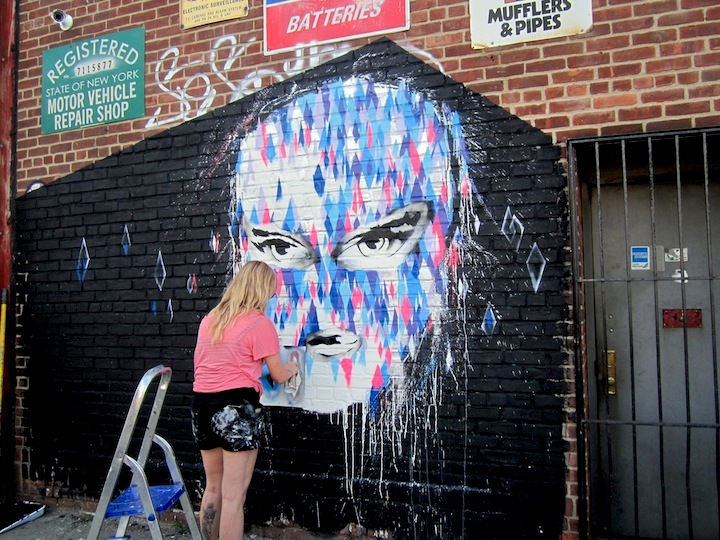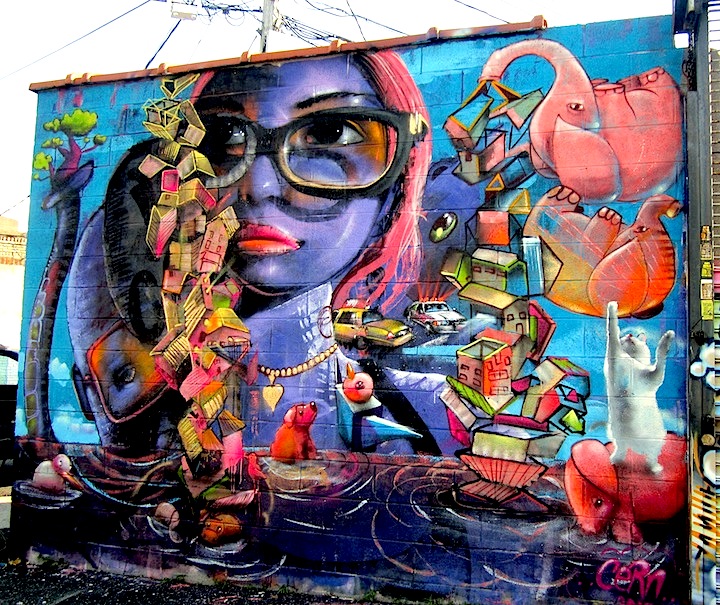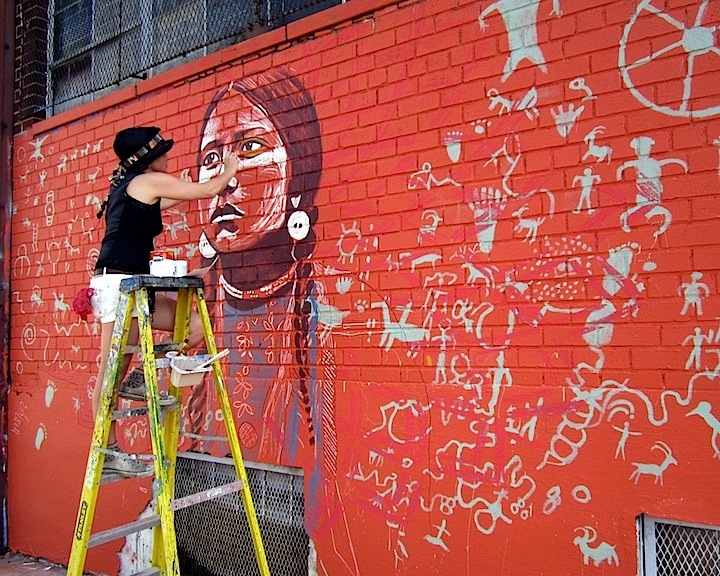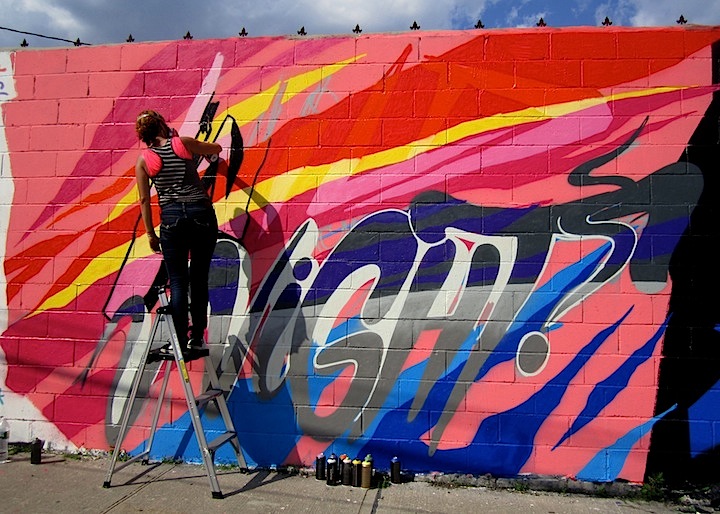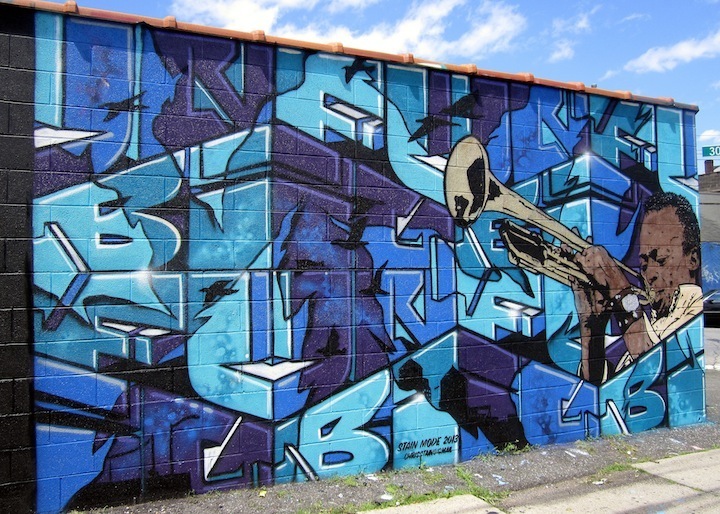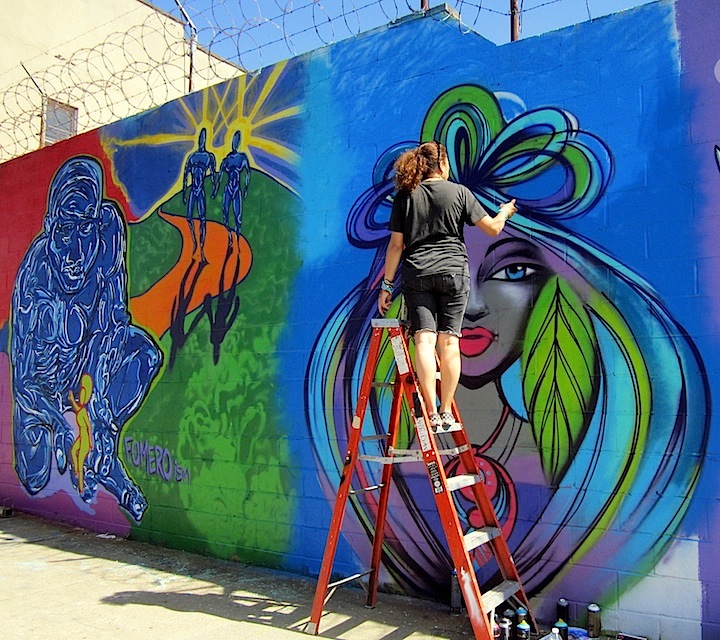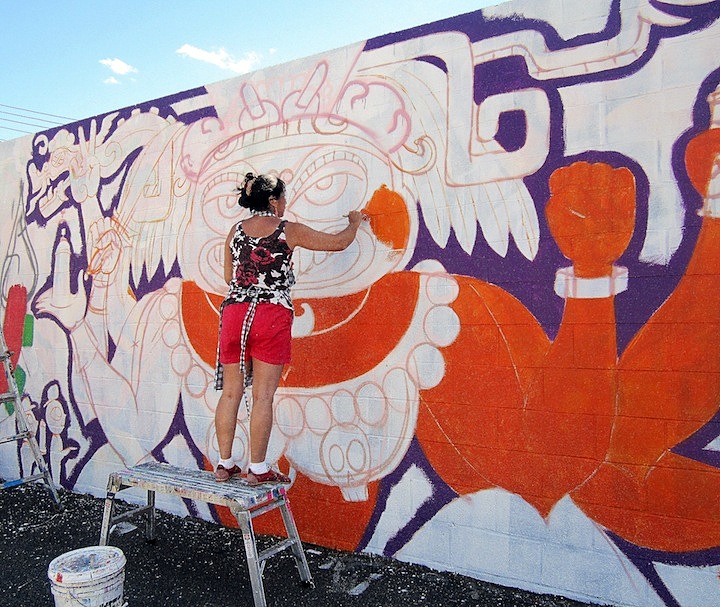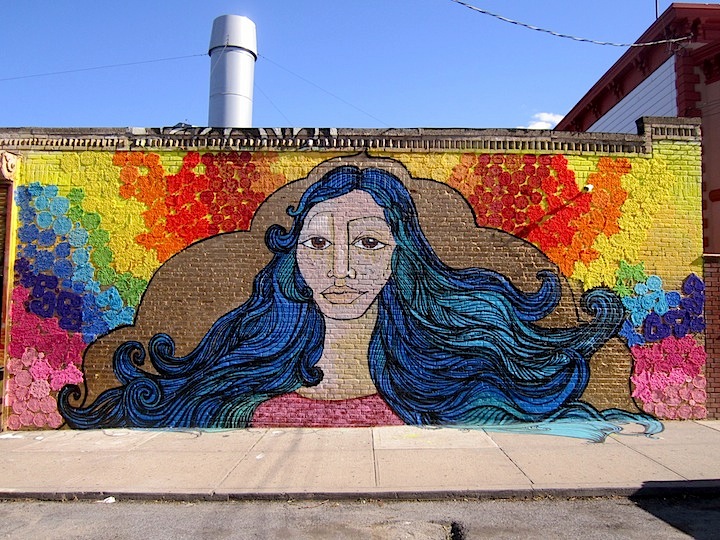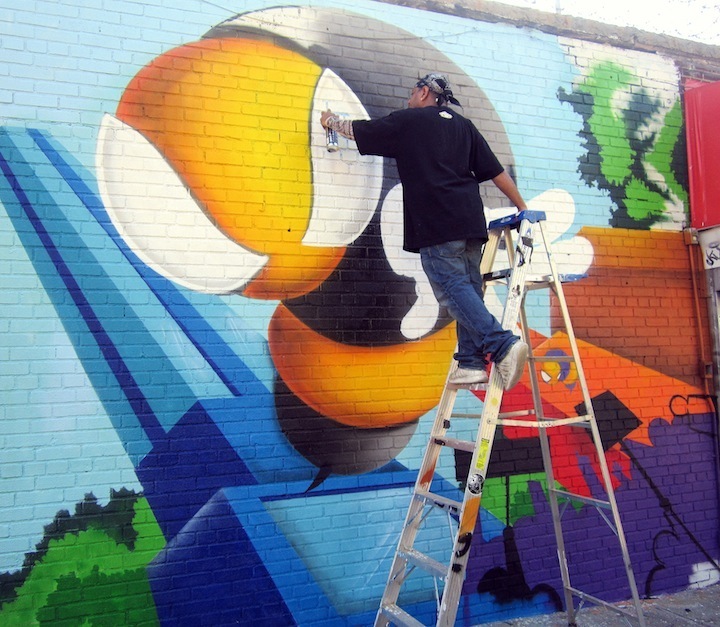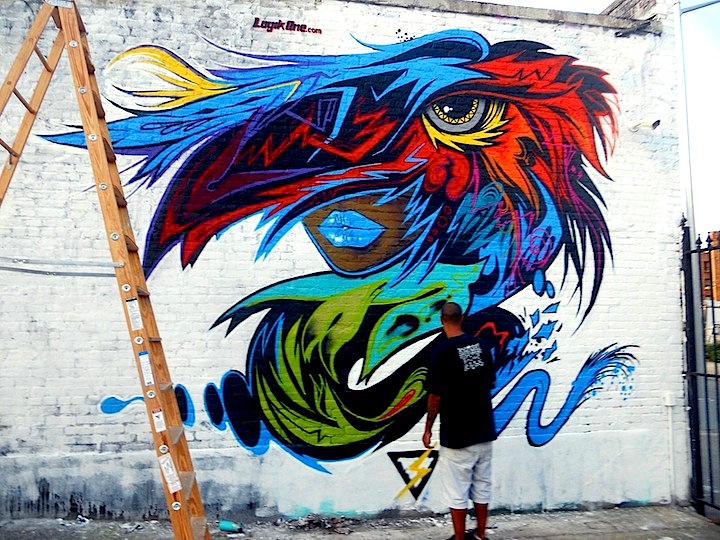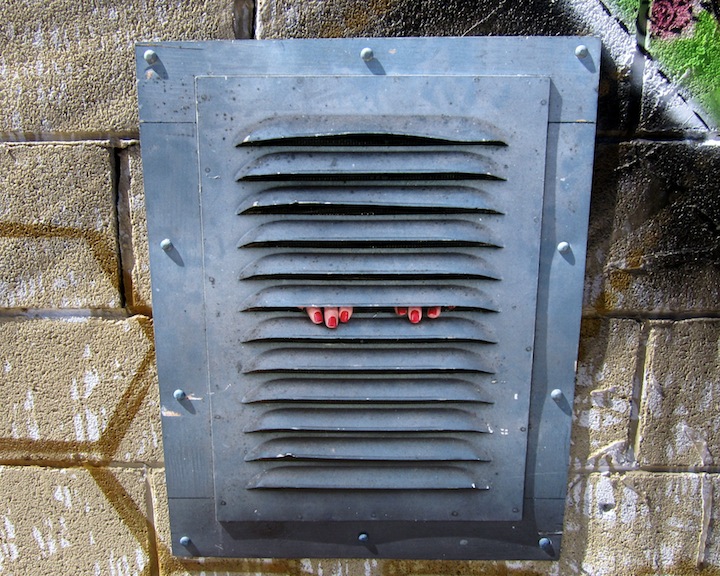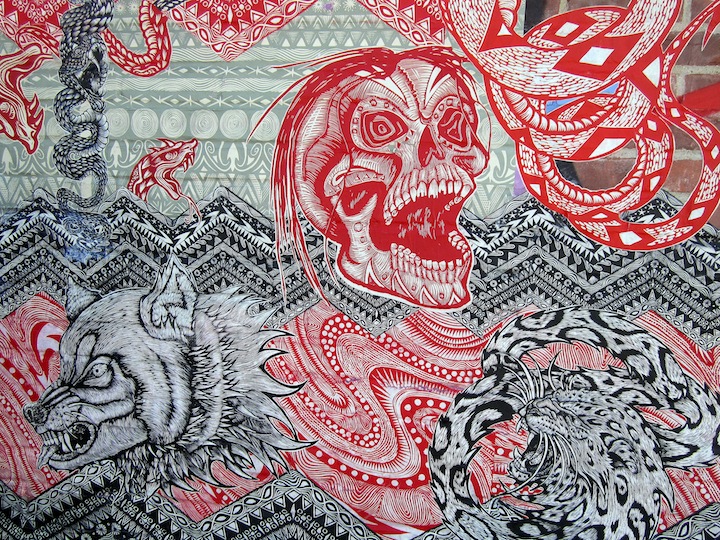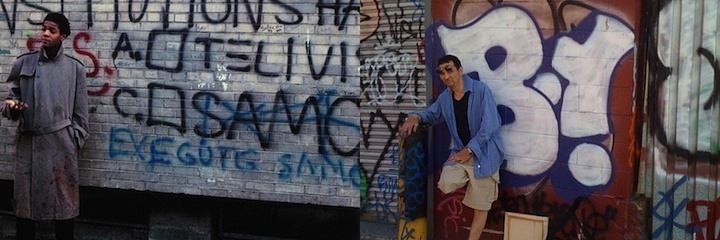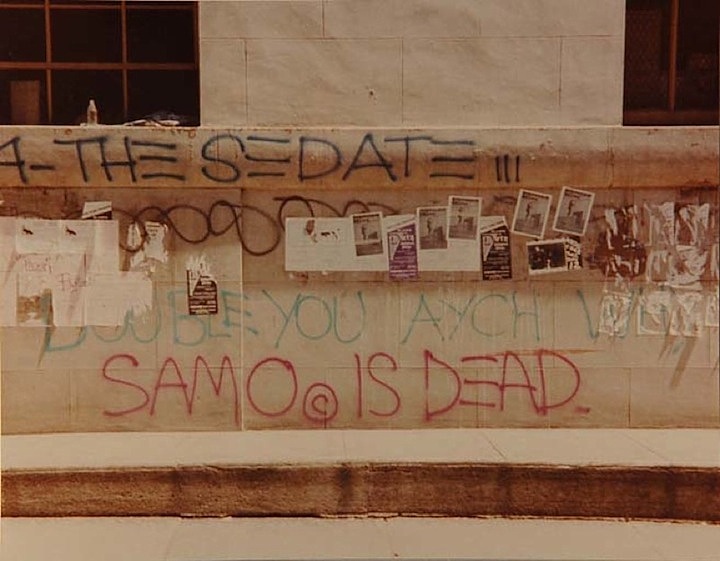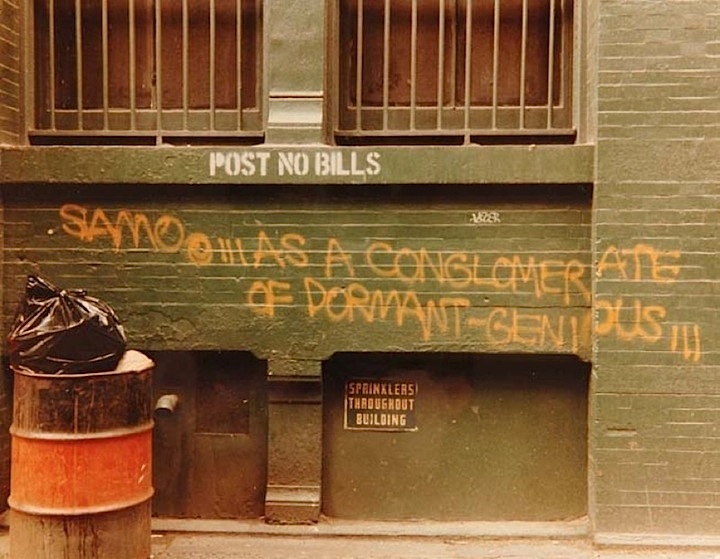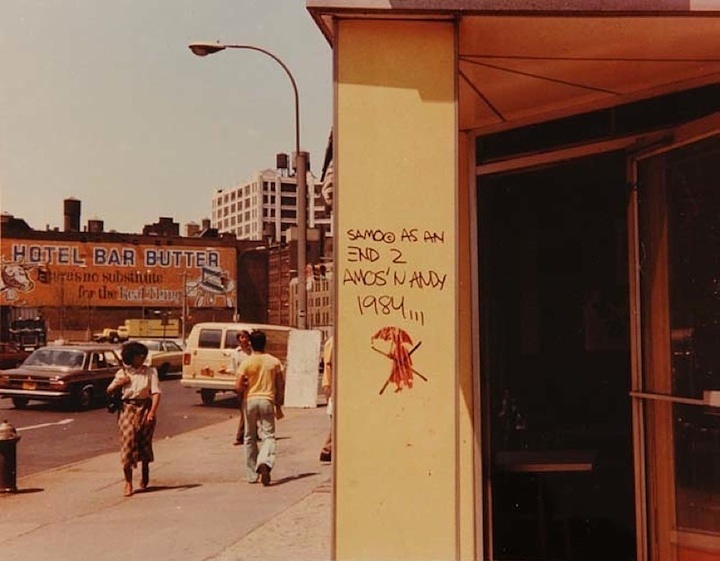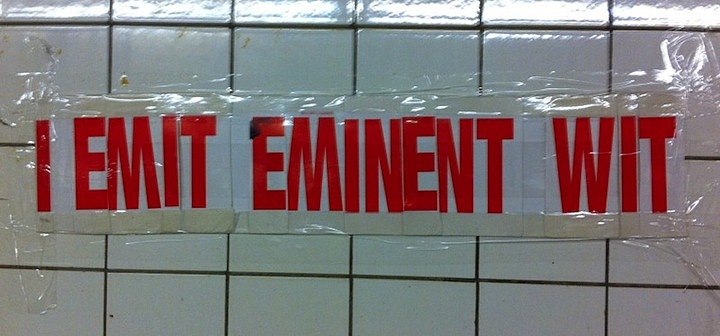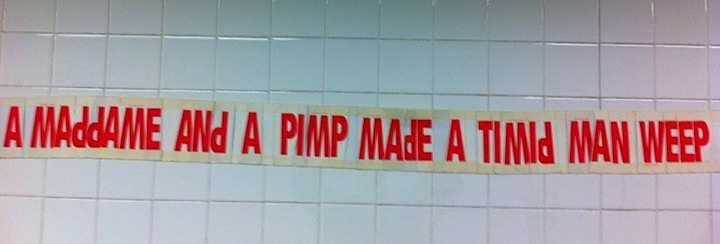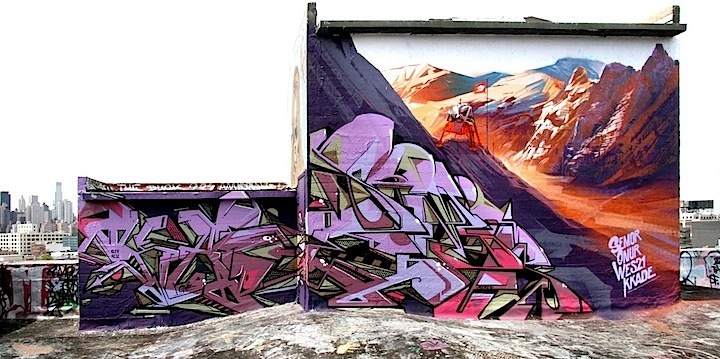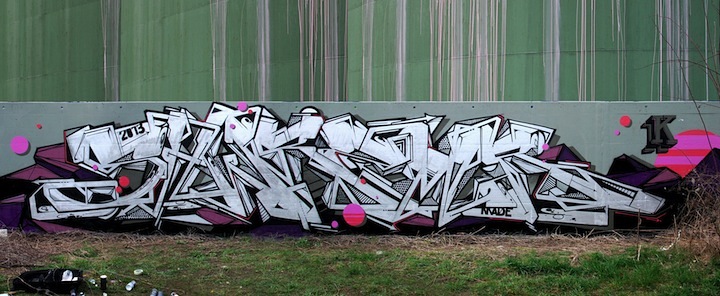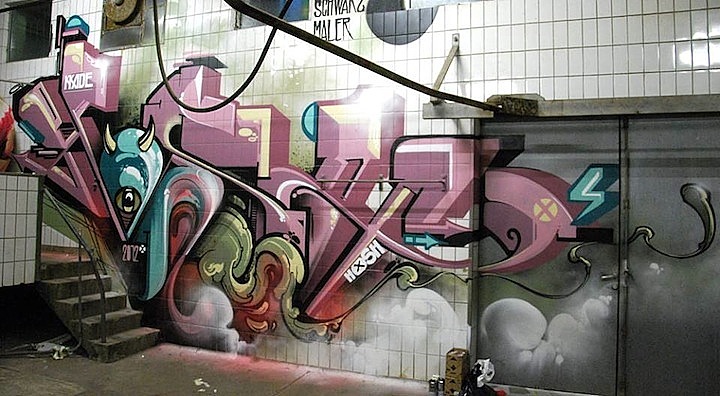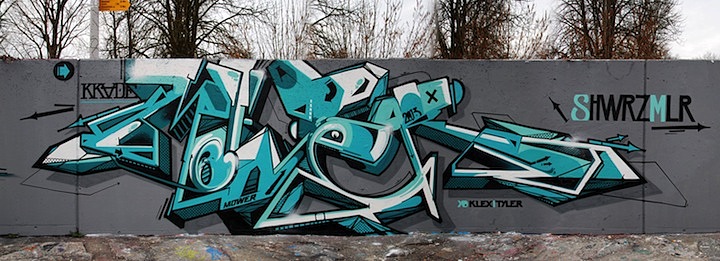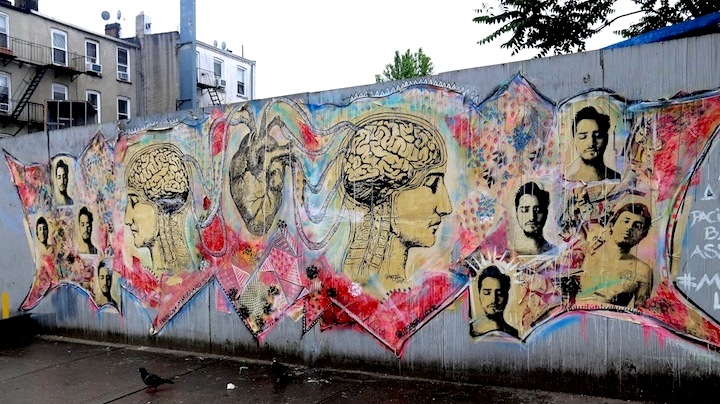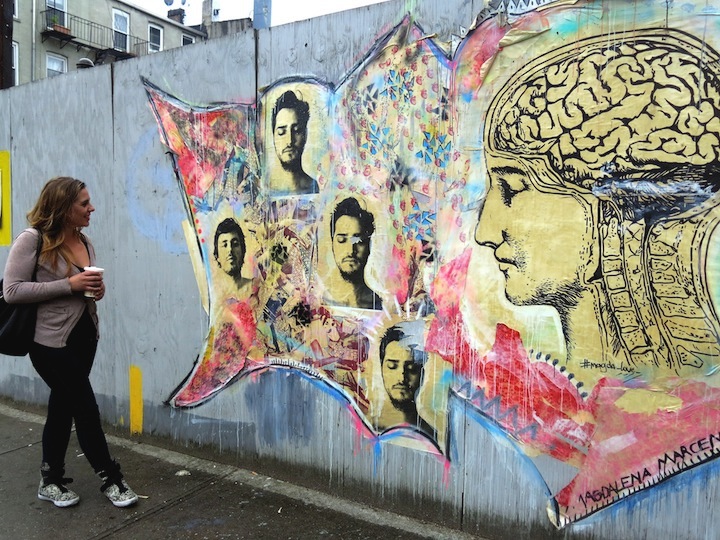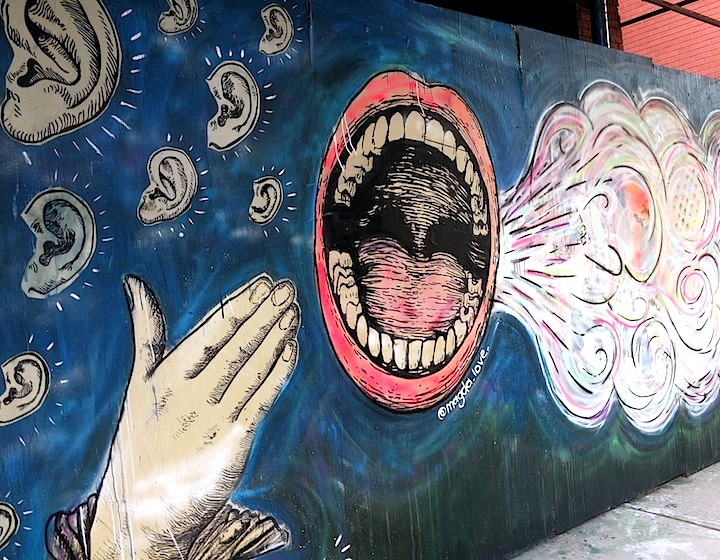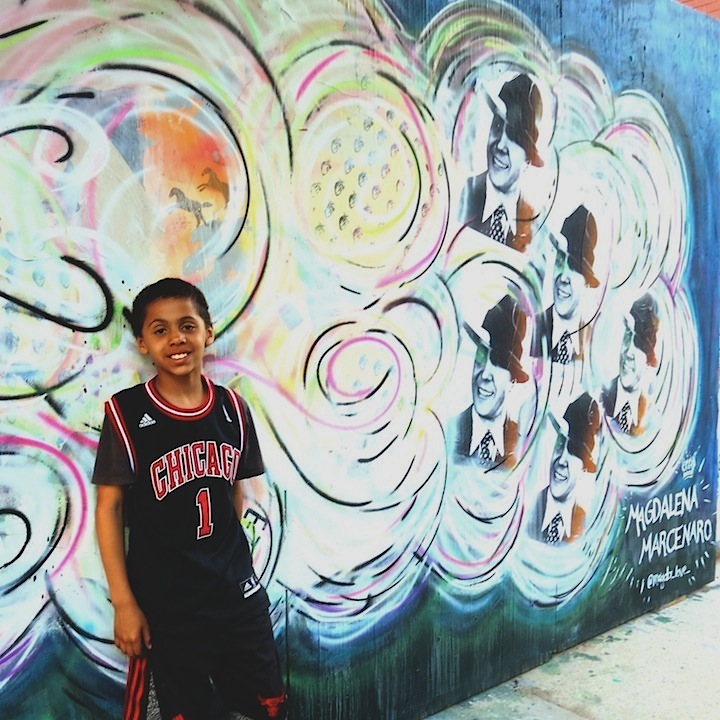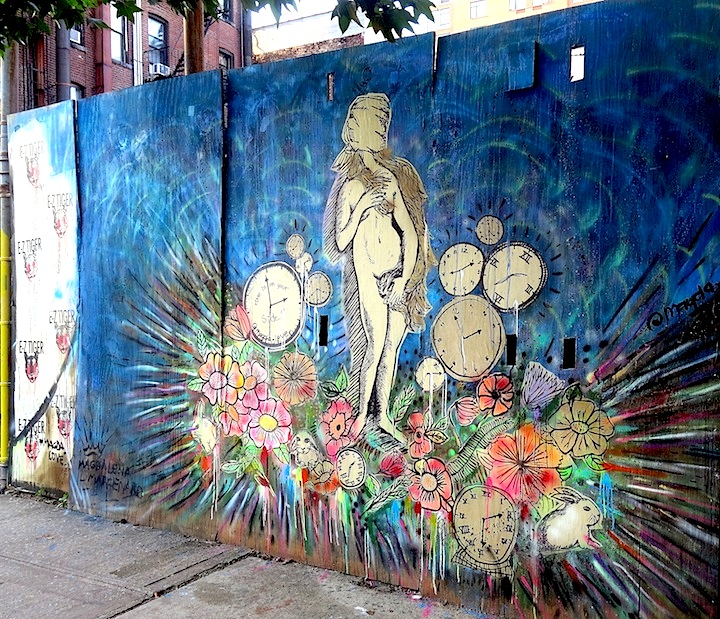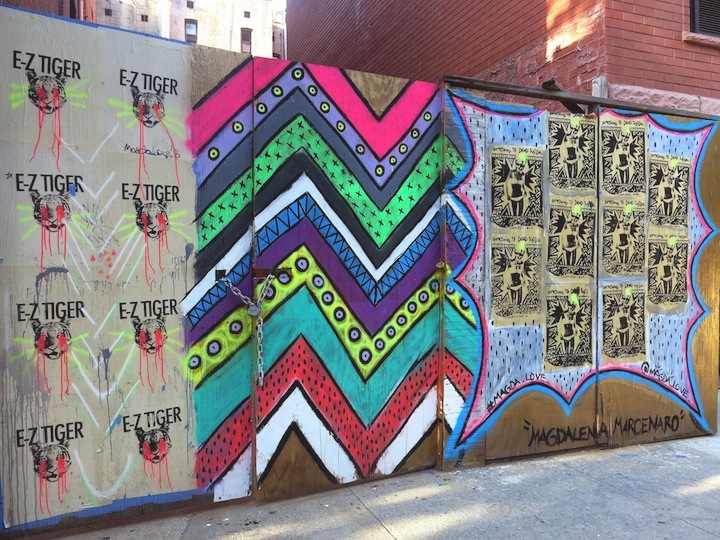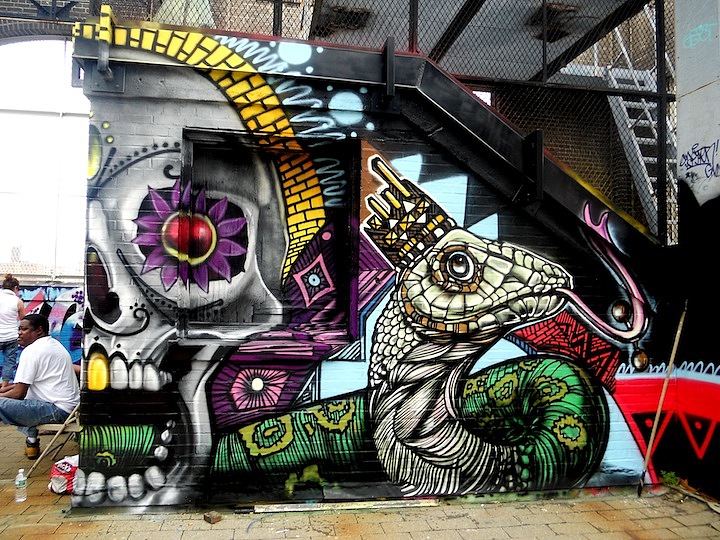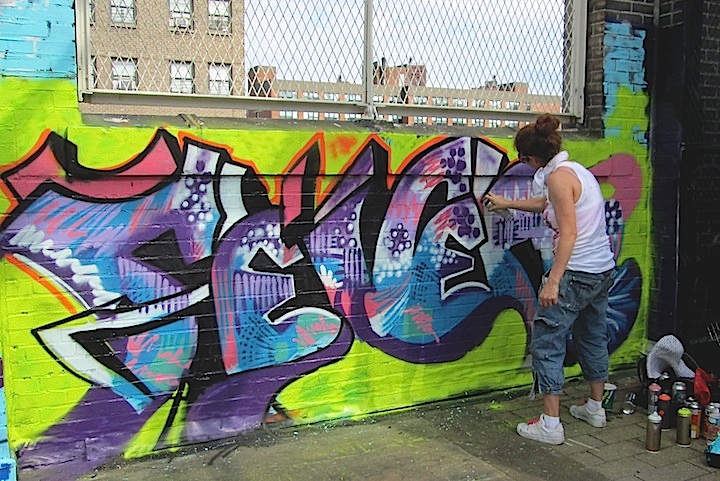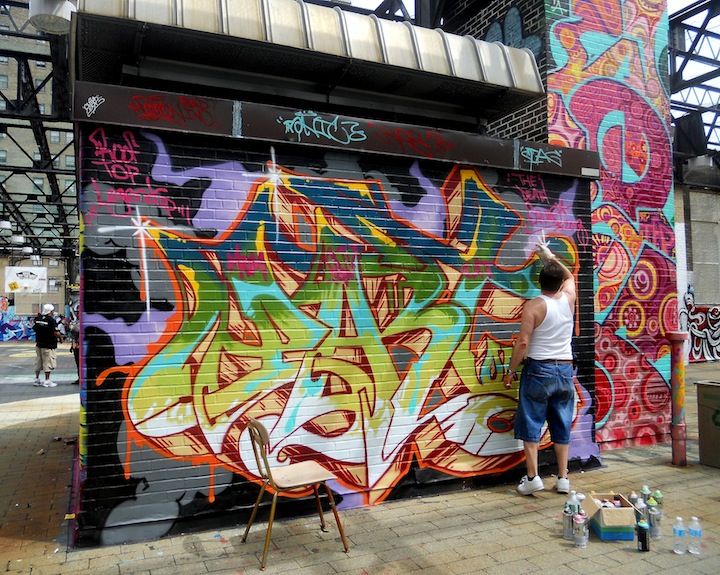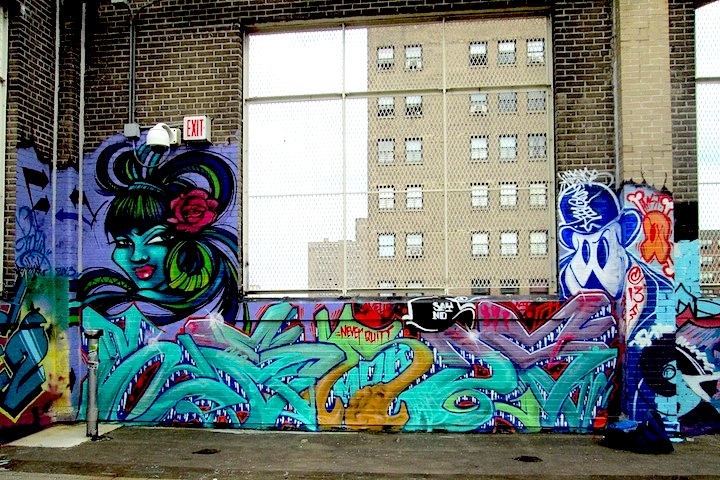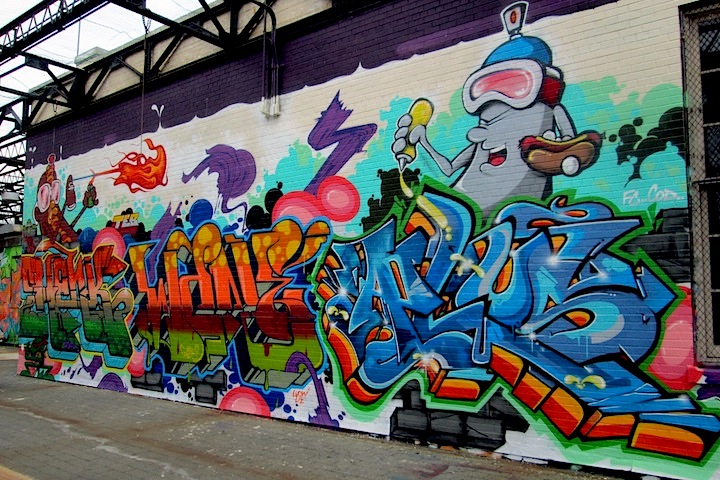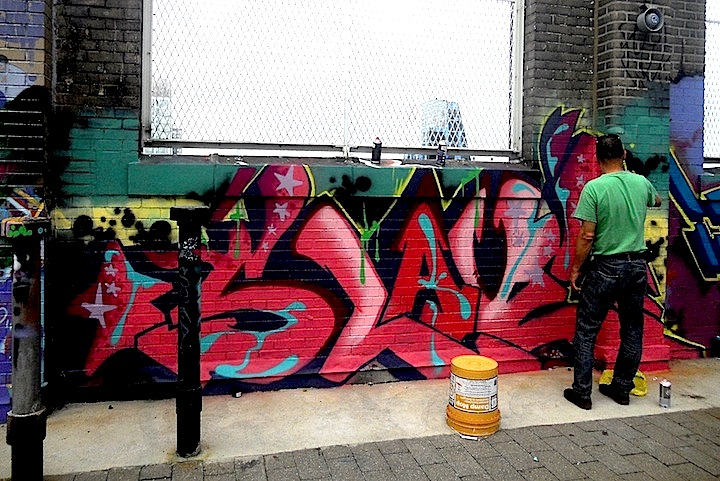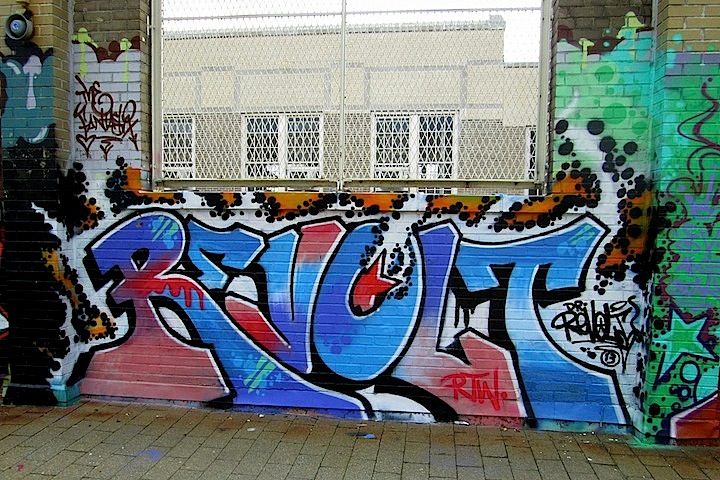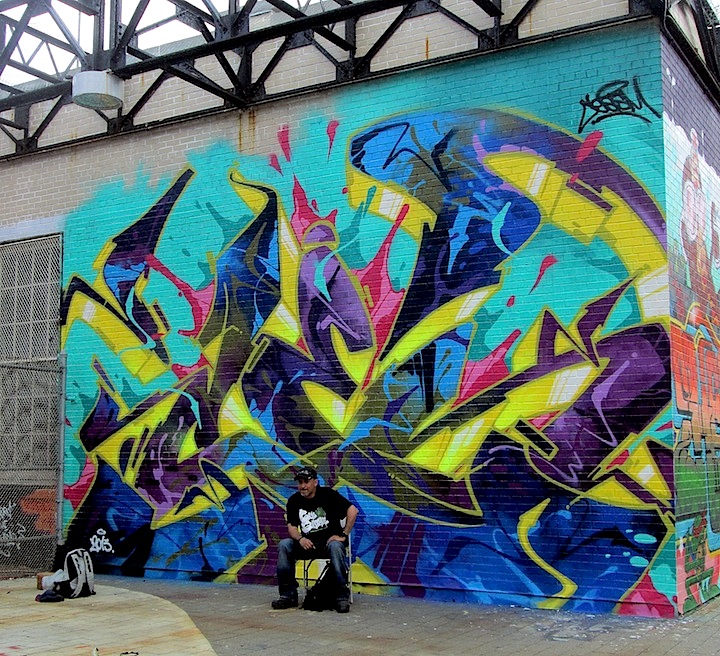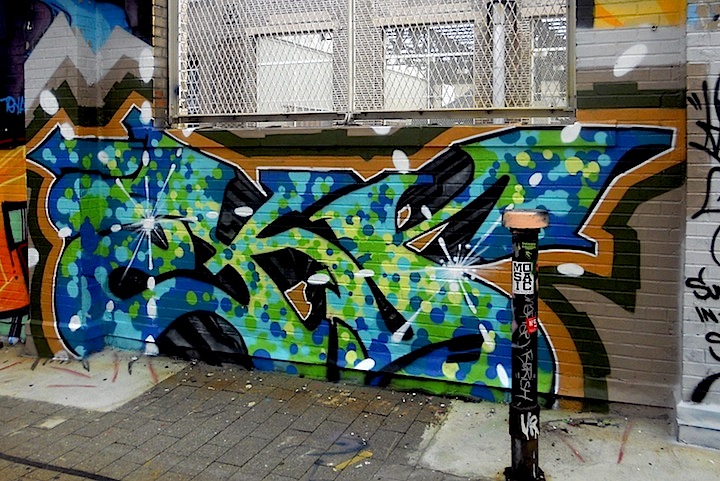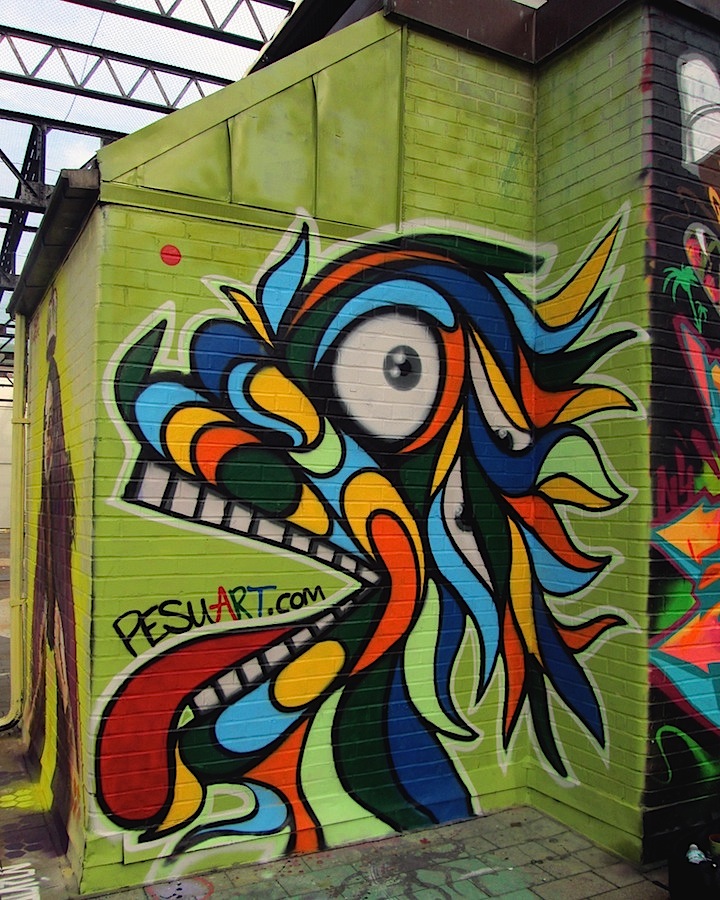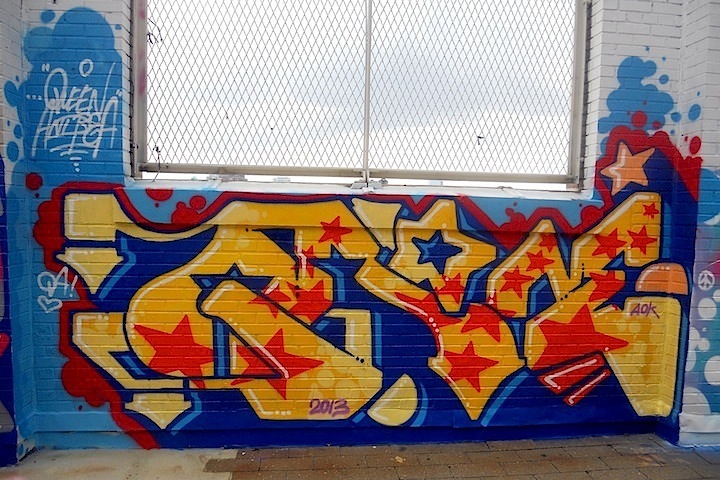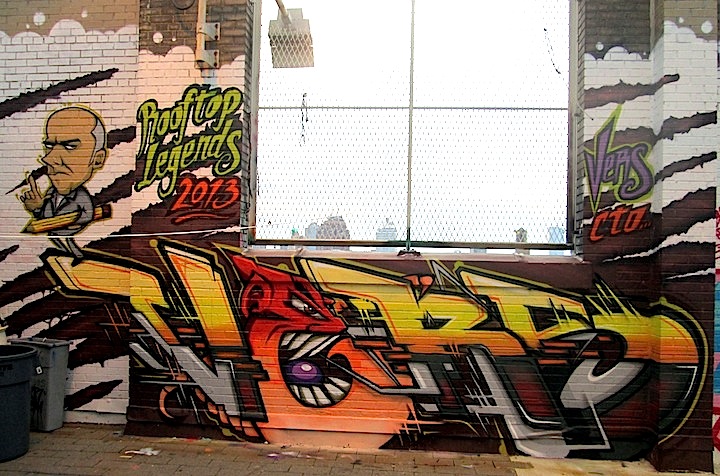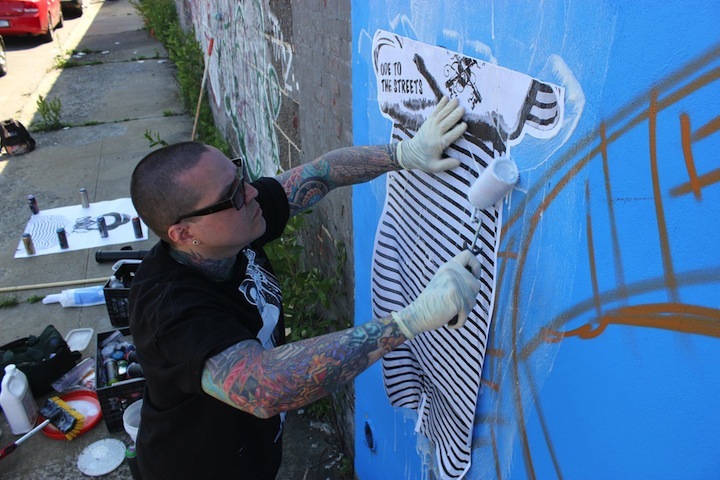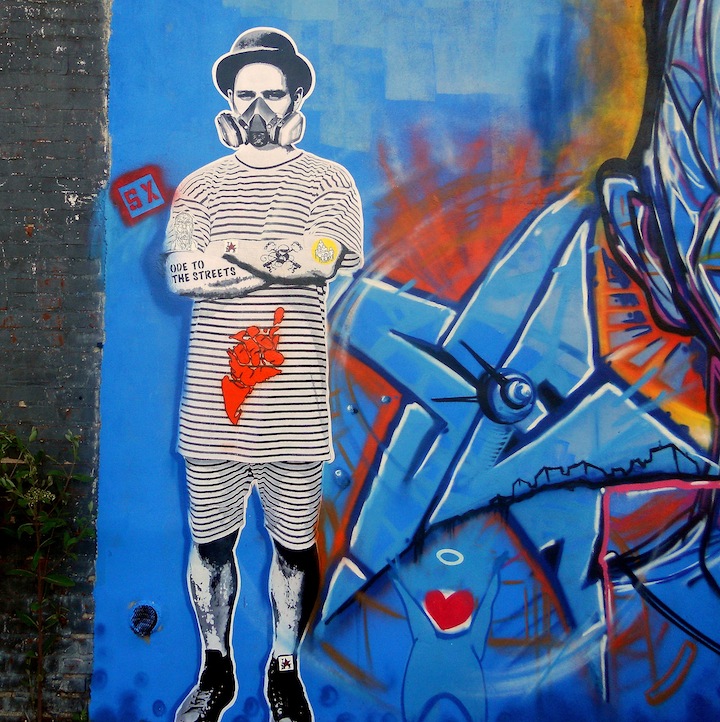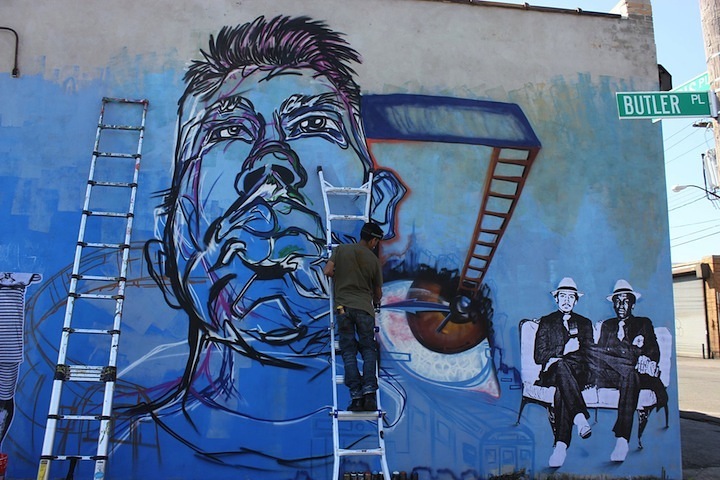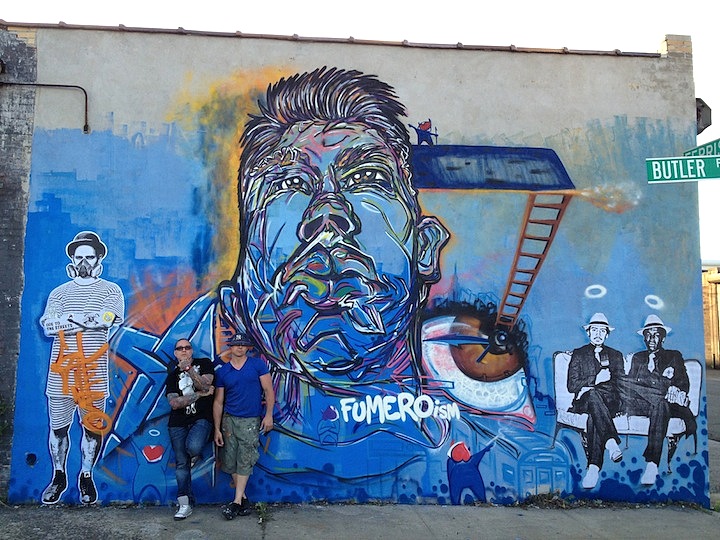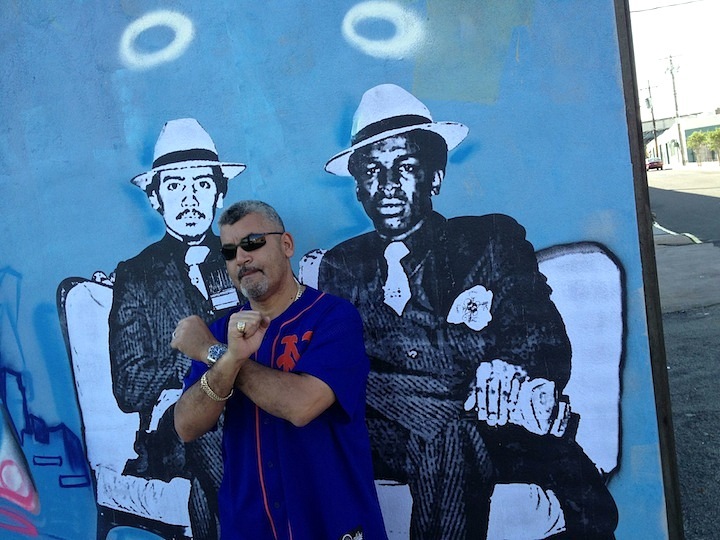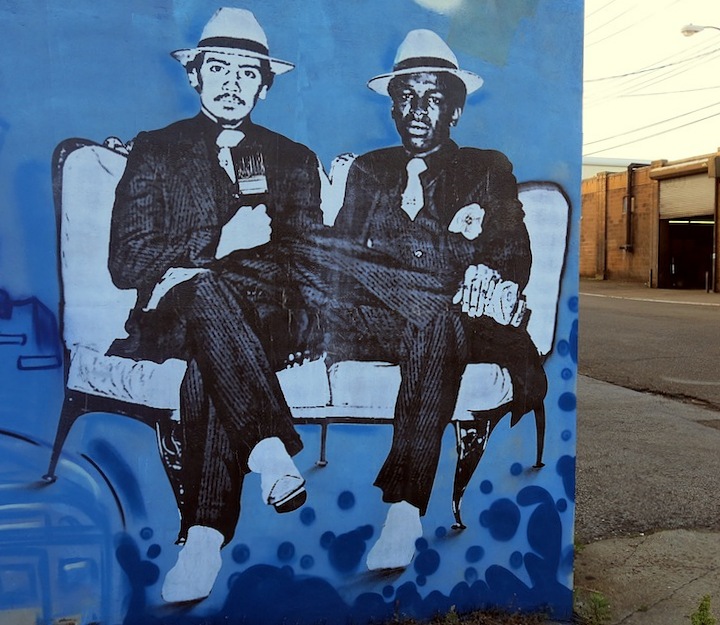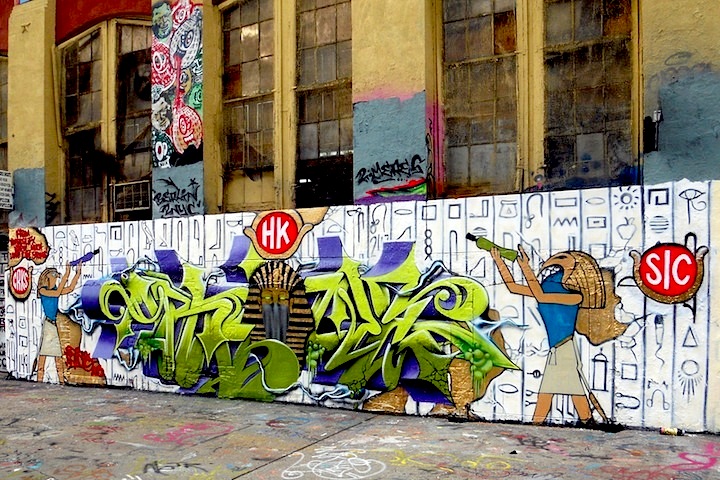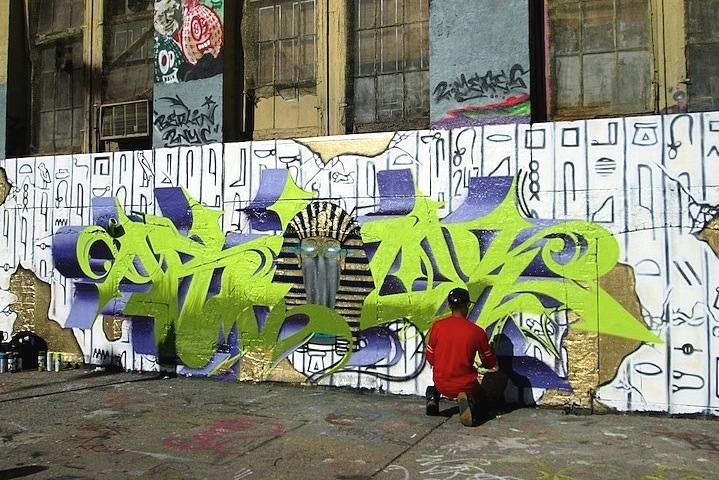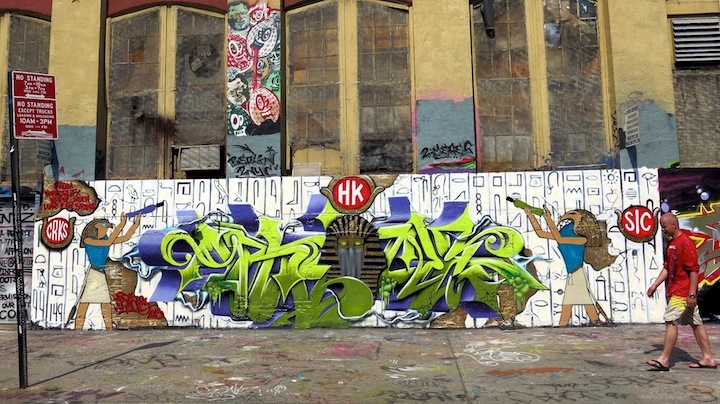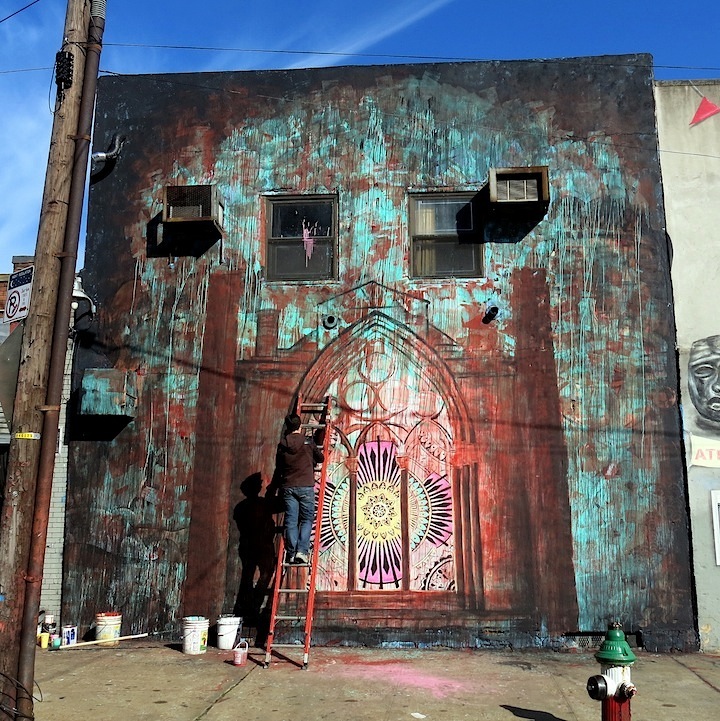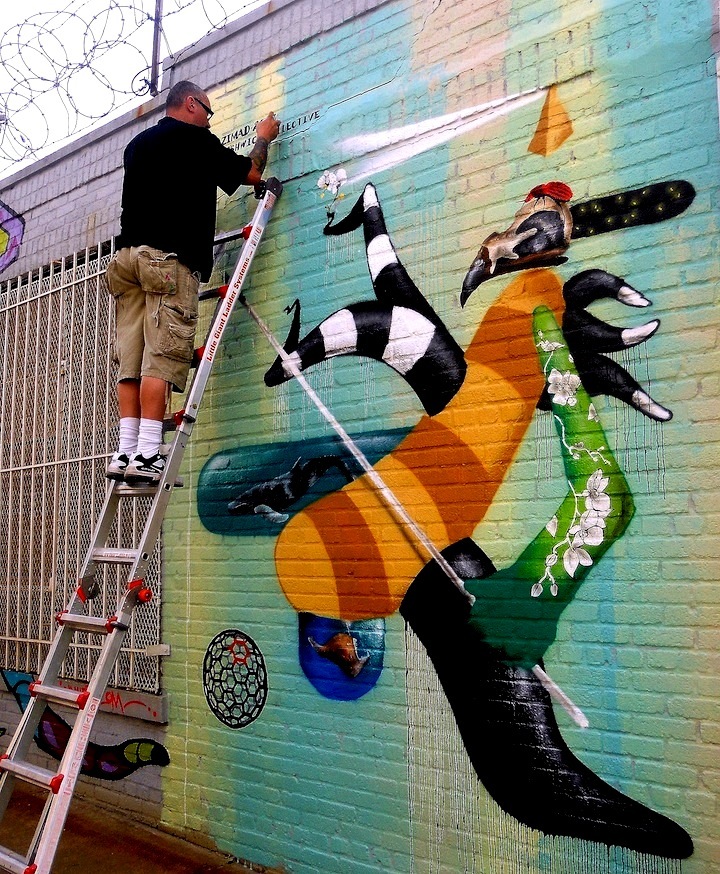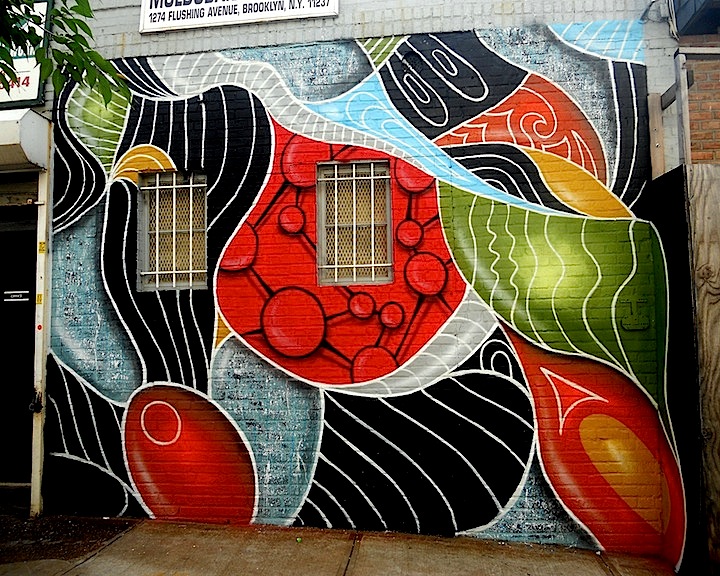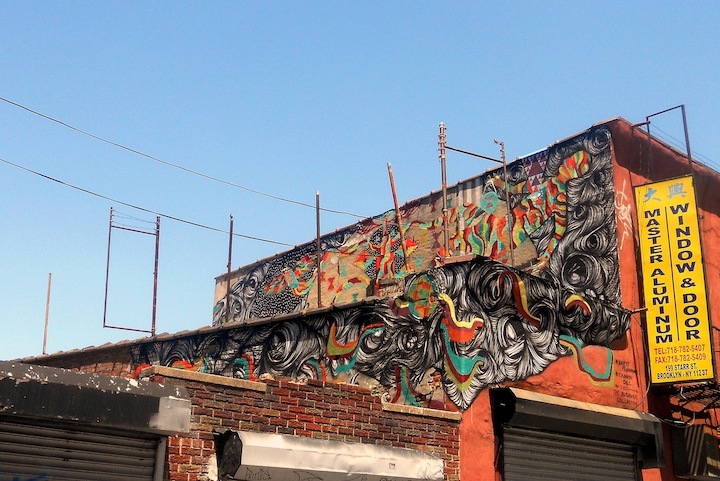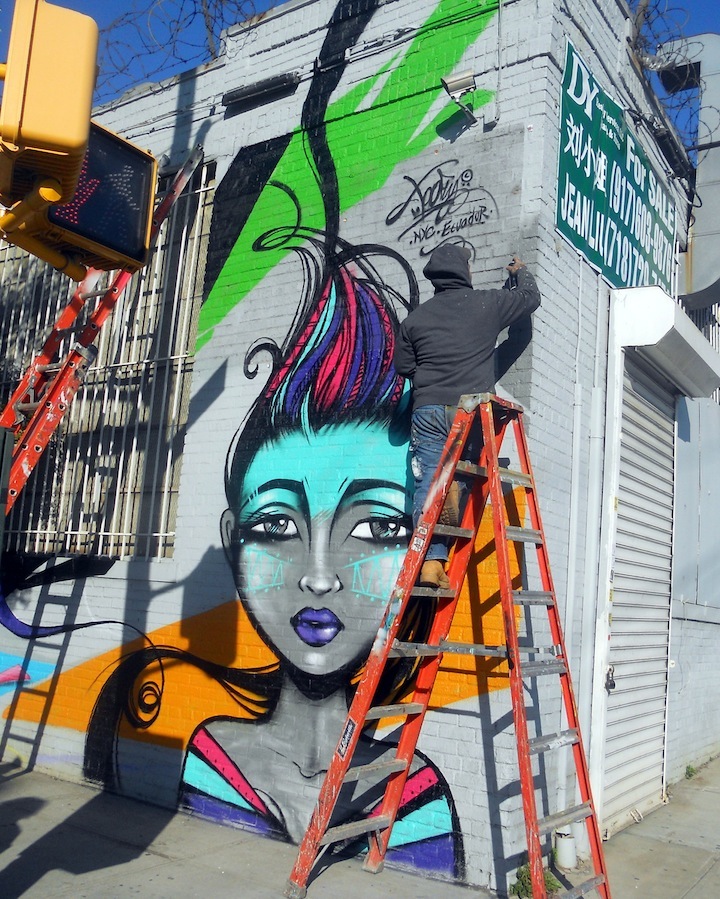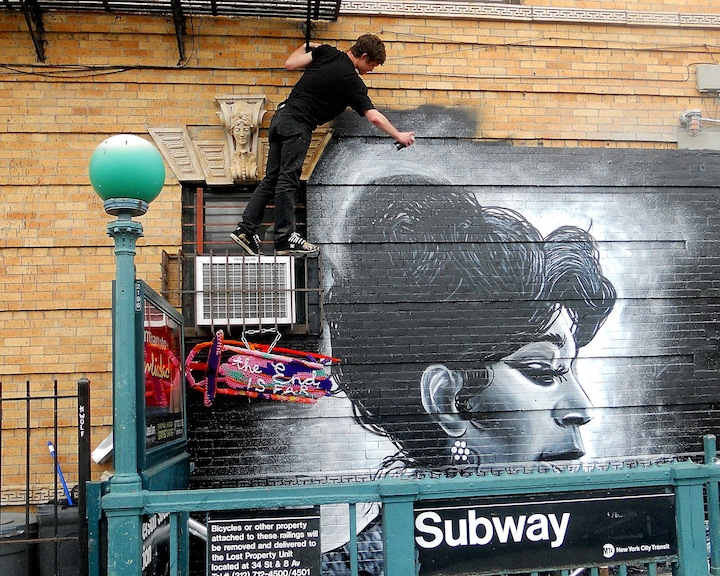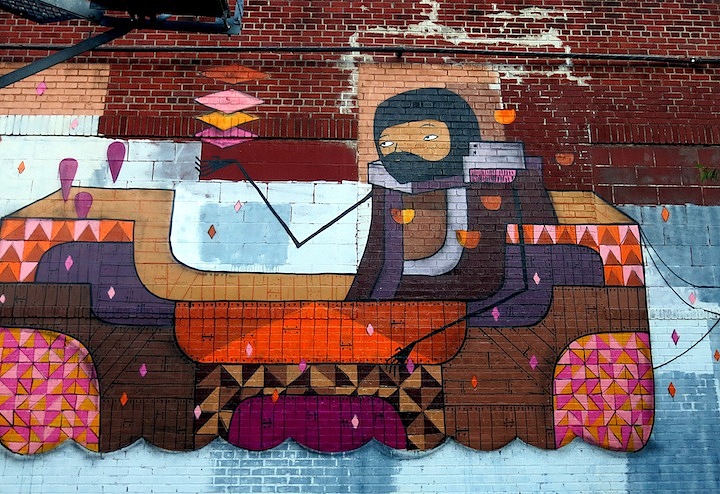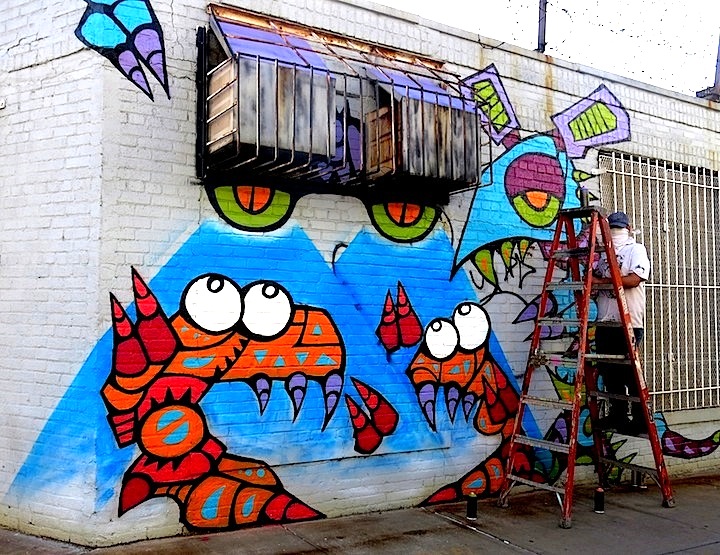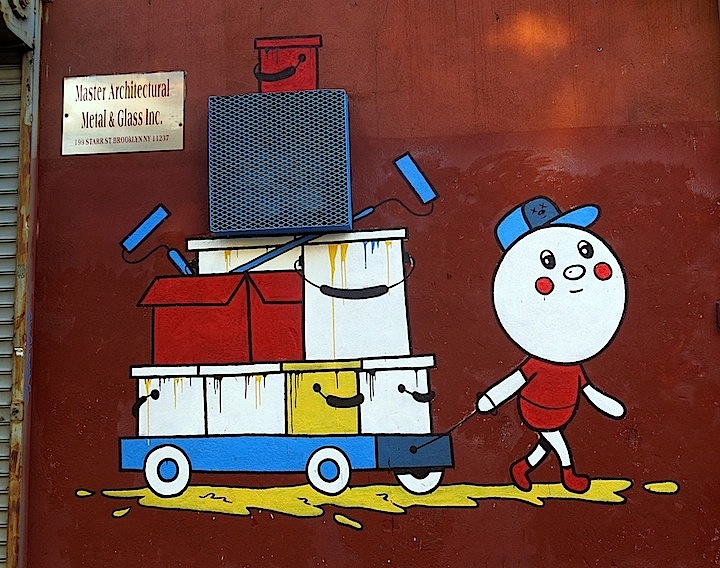As part of the fifth edition of the World Nomads festival, Tunisian artist eL Seed brought his soulful, lyrical calligraffiti to NYC last month. With its synthesis of Arabic writing, calligraphy and graffiti, eL Seed’s distinct style made its way to Manhattan’s Lower East Side and to 5Pointz in Long Island City, Queens. While he was here, we had the opportunity to ask him a few questions.
When and where did you first get up?
I started in the late 90’s in the suburbs of Paris. I was 16.
What inspired you to do it?
As a B-Boy, I was into the whole hip-hop culture. And I always liked art.
Have you any early graffiti memories?
A standout is when Zefa from the GAP Crew painted me doing a head-spin.
Any favorite spots?
I especially like abandoned places.
Do you work with a sketch in hand or do you just let it flow?
I do everything freestyle.
Do you prefer working alone or would you rather collaborate with others?
I tend to work by myself, but I also love collaborating with others.
What is the attitude of your family towards what you are doing?
I studied business at the university, and then I worked as a business consultant. My parents were somewhat concerned when I left that world. But now, when they see how happy I am, they’re fine about it.
Any thoughts on the graffiti/street art divide?
I don’t like the definitions. I don’t like the terms.
How do you feel about the role of the Internet in all of this?
On one level, it’s cool because it gives us opportunity to share our vision with other people. But, on the other hand, artwork loses its context when it’s online
What is the riskiest thing you ever did?
Painting on top of a mosque 47 meters high in Tunisia.
Why were you willing to take that risk?
It was a way of returning to my roots.
Do you work with a sketch in hand or do you just let it flow?
I do everything freestyle.
What inspires you to paint in public?
It’s a quest for identity. I was born and raised in France, but French people tell me that I’m not French – that I’m Arabic. And I want to maintain pride in my native culture. I do not want to lose it. That’s a reason why I write in Arabic.
Do you have a message to convey?
Despite our differences, we are all the same. We’re all human and we all have the same struggle.
How has your work evolved through the years?
I’ve learned to adapt to any surface, and the flow and shapes of my letters keep on evolving.
You’ve travelled to many cities. Have you any favorites?
My favorite city is Gabes in Tunisia. I have a strong emotional connection because it’s my family’s native land.
How do you feel about the movement of graffiti and street-art into galleries?
I’d rather paint on walls, but to sustain myself, I’ve shown in galleries.
What are some of your other interests?
I love to cook. I cook everything for my family. And I love to read, especially about history.
What do you see as the role of the artist in society?
To give visual expression to what people think. The artist is the ambassador of our society.
Photos by Dani Mozeson, Tara Murray and Lois Stavsky; the fourth photo also features Meres and Jaye, along with eL Seed, and the fifth features a collaboration between eL Seed and Jaye
{ 0 comments }
